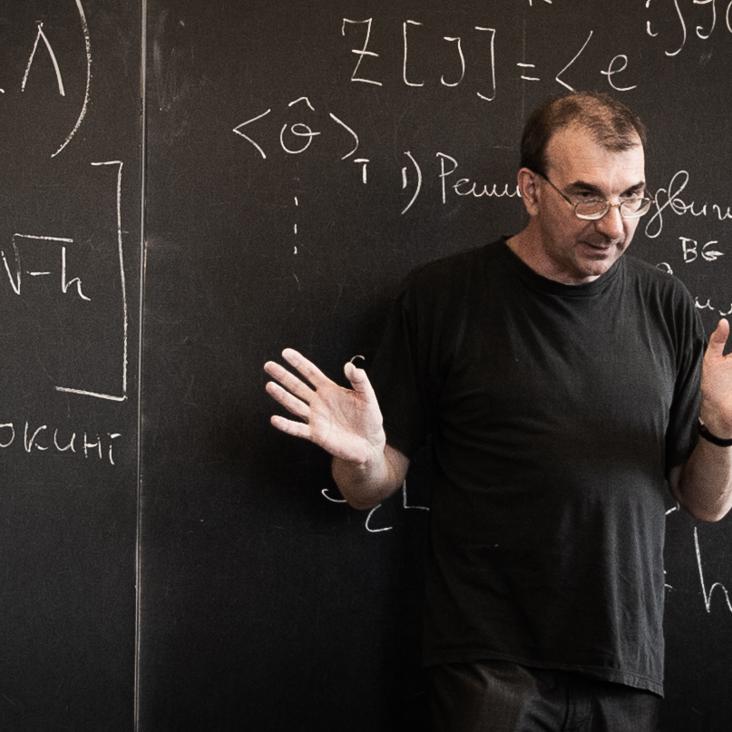Convergence of the Gradient Expansion in Hydrodynamics
Physical Review Letters American Physical Society (APS) 122:25 (2019) 251601
From strong to weak coupling in holographic models of thermalization
Journal of High Energy Physics Springer Verlag 2016:151 (2016) 1-52
Abstract:
We investigate the analytic structure of thermal energy-momentum tensor correlators at large but finite coupling in quantum field theories with gravity duals. We compute corrections to the quasinormal spectra of black branes due to the presence of higher derivative R2 and R4 terms in the action, focusing on the dual to N= 4 SYM theory and Gauss-Bonnet gravity. We observe the appearance of new poles in the complex frequency plane at finite coupling. The new poles interfere with hydrodynamic poles of the correlators leading to the breakdown of hydrodynamic description at a coupling-dependent critical value of the wave-vector. The dependence of the critical wave vector on the coupling implies that the range of validity of the hydrodynamic description increases monotonically with the coupling. The behavior of the quasinormal spectrum at large but finite coupling may be contrasted with the known properties of the hierarchy of relaxation times determined by the spectrum of a linearized kinetic operator at weak coupling. We find that the ratio of a transport coefficient such as viscosity to the relaxation time determined by the fundamental non-hydrodynamic quasinormal frequency changes rapidly in the vicinity of infinite coupling but flattens out for weaker coupling, suggesting an extrapolation from strong coupling to the kinetic theory result. We note that the behavior of the quasinormal spectrum is qualitatively different depending on whether the ratio of shear viscosity to entropy density is greater or less than the universal, infinite coupling value of ℏ/4πkB. In the former case, the density of poles increases, indicating a formation of branch cuts in the weak coupling limit, and the spectral function shows the appearance of narrow peaks. We also discuss the relation of the viscosity-entropy ratio to conjectured bounds on relaxation time in quantum systems.Quasinormal modes and holography
Physical Review D Particles Fields Gravitation and Cosmology 72:8 (2005)
Abstract:
Quasinormal frequencies of electromagnetic and gravitational perturbations in asymptotically anti-de Sitter spacetime can be identified with poles of the corresponding real-time Green's functions in a holographically dual finite temperature field theory. The quasinormal modes are defined for gauge-invariant quantities which obey an incoming-wave boundary condition at the horizon and a Dirichlet condition at the boundary. As an application, we explicitly find poles of retarded correlation functions of R-symmetry currents and the energy-momentum tensor in strongly coupled finite temperature N=4 supersymmetric SU(Nc) Yang-Mills theory in the limit of large Nc. © 2005 The American Physical Society.Viscosity in strongly interacting quantum field theories from black hole physics
Physical Review Letters 94:11 (2005)
Abstract:
The ratio of shear viscosity to volume density of entropy can be used to characterize how close a given fluid is to being perfect. Using string theory methods, we show that this ratio is equal to a universal value of ℏ/4πkB for a large class of strongly interacting quantum field theories whose dual description involves black holes in anti-de Sitter space. We provide evidence that this value may serve as a lower bound for a wide class of systems, thus suggesting that black hole horizons are dual to the most ideal fluids. © 2005 The American Physical Society.Instability in N=4 supersymmetric Yang-Mills theory at finite density
Physical Review D American Physical Society (APS) 111:8 (2025) 086030


